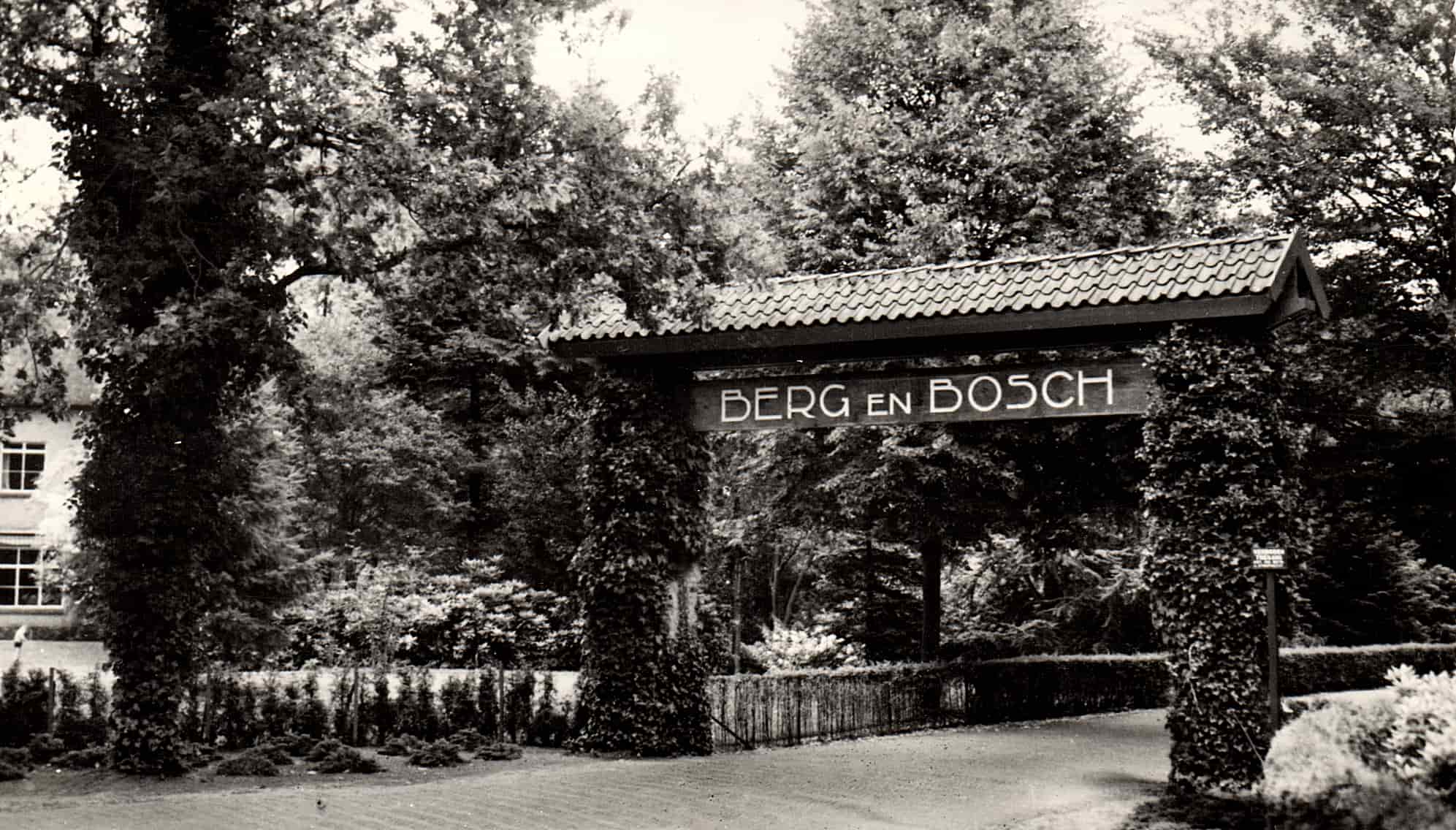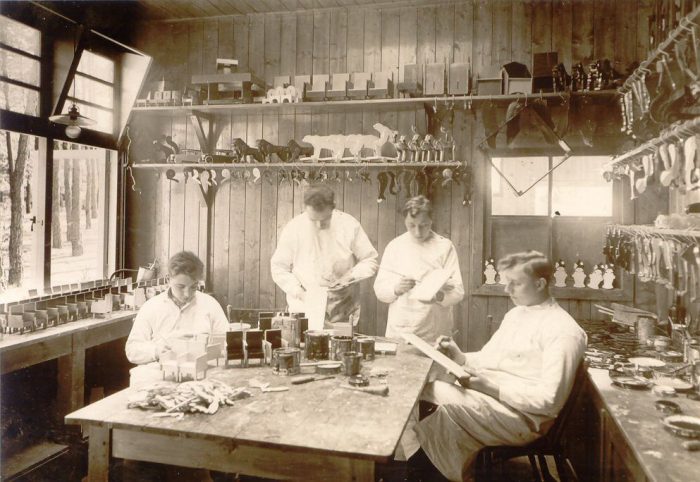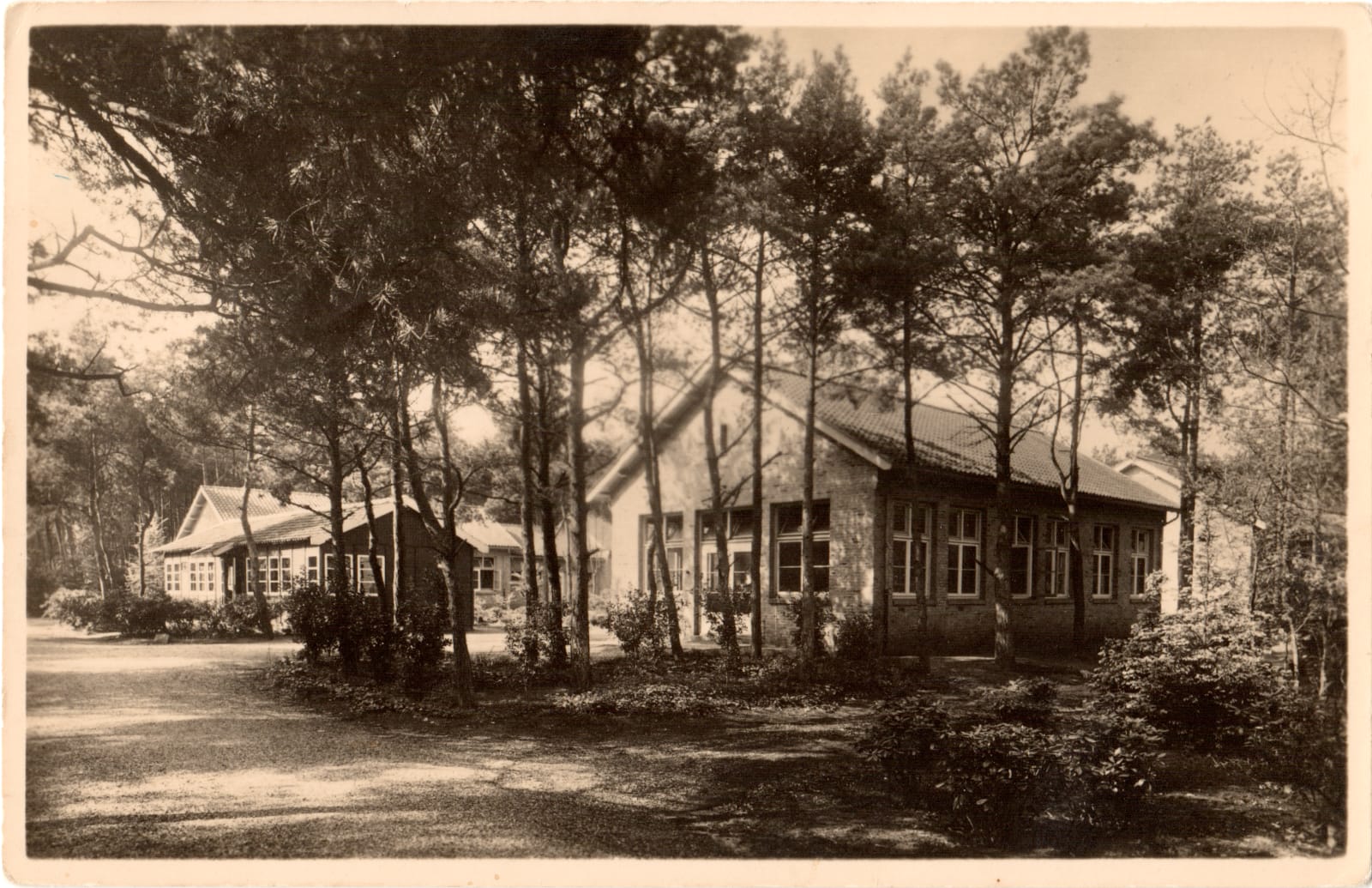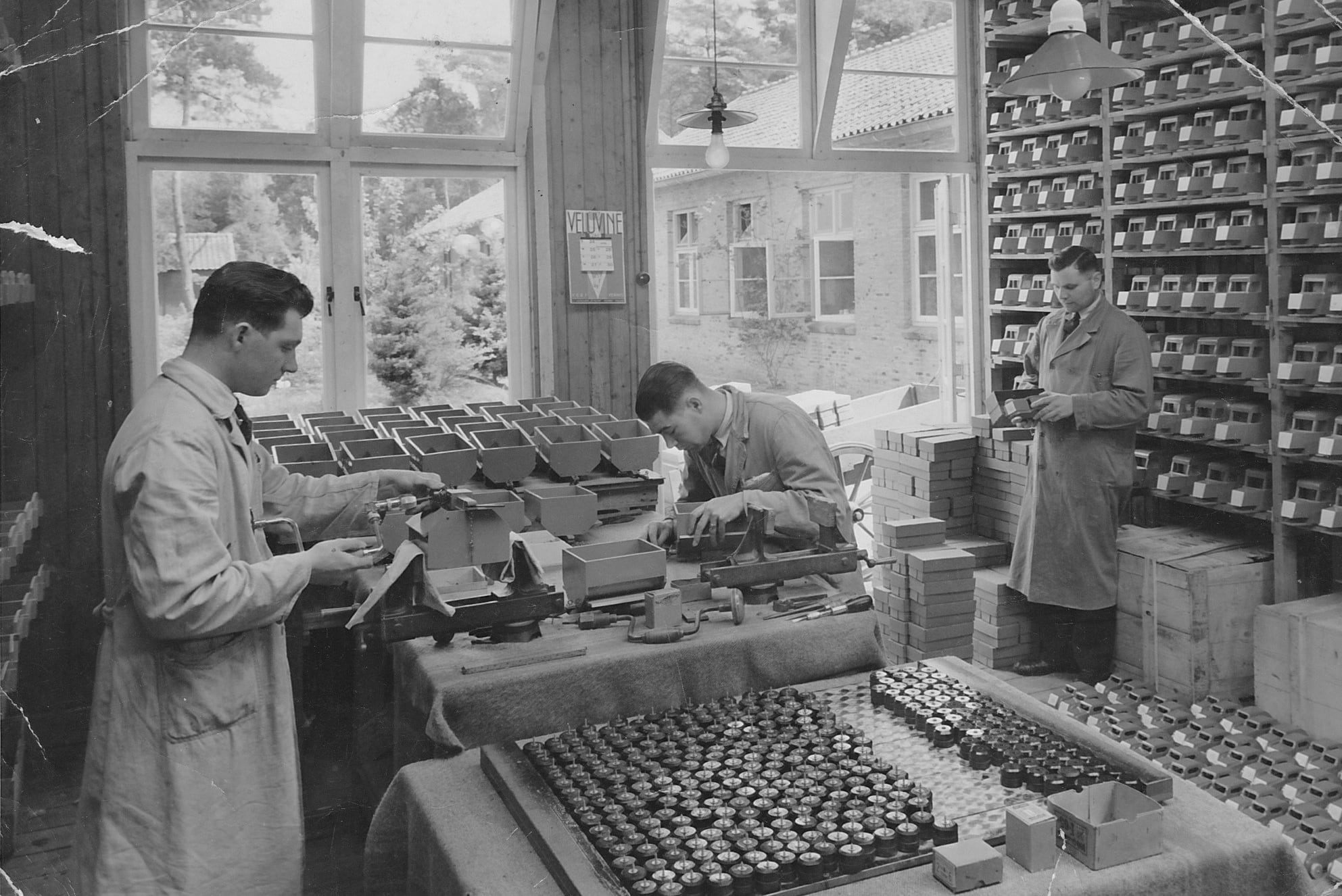
Playthings from a sanatorium: the ado toys workshop
Lying down all day
The story of ado begins in 1918 amidst the tranquil woods near the Dutch city of Apeldoorn. In close proximity to the Berg en Bosch villa, barracks were erected to accommodate patients suffering from tuberculosis, a devastating lung disease that claimed numerous lives before World War II. Sanatoriums played a crucial role in the treatment, it was thought that the ‘rejuvenating and healing’ atmosphere allowed patients to recuperate. Berg en Bosch was one such sanatorium.


The ado toys workshop
After completing their treatment in the sanatorium, patients had to resume their day jobs. To facilitate this transition, the patients engaged in work at the ado workshop, a concept introduced by director Willem Bronkhorst (1888 – 1960). Due to their limited ability to fully participate in society, the patients were referred to as incapacitated workers. Consequently, the workshop’s products were labeled as ‘labor by the incapacitated’ (arbeid door onvolwaardigen, ado for short). Under the guidance of Jacobus (Ko) Verzuu (1901 – 1971), the patients crafted various items, including toys, while Elisabeth Loke (1902 – 1988) supervised loomwork. Both Verzuu and Loke were responsible for designing these products. An early photograph of the workshop portrays its relatively small-scale nature.
A brand new sanatorium
After a decade in Apeldoorn, it became apparent that the existing barracks were no longer suitable. As a result, from February 3, 1932, a new sanatorium was constructed in the serene woods near Utrecht. Despite the change in location, the name Berg en Bosch endured. The new main building housed around 340 patients, with an additional 50 to 60 accommodated in nearby cabins.


Production until the end
In Bilthoven, a dedicated workshop was established for the large-scale production of ado toys, which continued until 1962. As tuberculosis declined due to post-World War II prosperity bringing improved housing and medical advancements, the need for the sanatorium Berg en Bosch diminished. Despite this, a social work project sustained ado production after 1962, although the era of the remarkable cars and furniture had long passed. During this time, the abbreviation ado evolved to signify ‘Different Effective Indestructible’ (Apart Doelmatig Onverwoestbaar).
